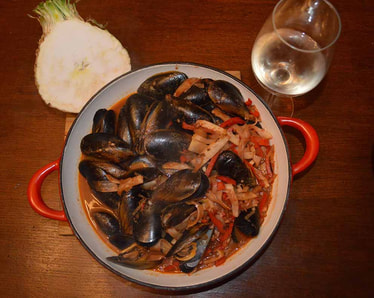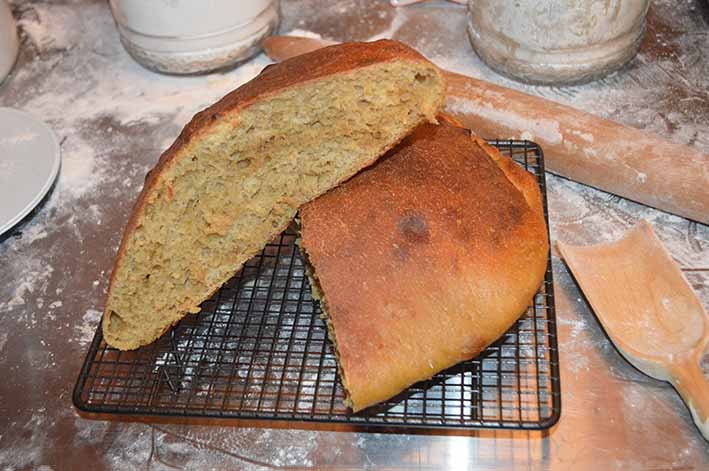
By Liane Arno
I SHOULD have been a little suspicious when Matt told me he wanted to go to Canada and “rediscover my roots.” “But you weren’t born there,” I said. “Ah but I was there as a teenager!” Get it??
Matt lived in Canada on a couple of occasions as his father was a diplomat and was posted there. At the time he only had to speak with his Australian accent to have the girls swoon – and the blokes to admire him as he was able to play gridiron really well with his Aussie Rules skills. His oldest brother had enjoyed the people so much that he had to marry a girl (if you get my meaning) and stayed there. They are still together after all these years and it was to visit them that we travelled to Vancouver.
I SHOULD have been a little suspicious when Matt told me he wanted to go to Canada and “rediscover my roots.” “But you weren’t born there,” I said. “Ah but I was there as a teenager!” Get it??
Matt lived in Canada on a couple of occasions as his father was a diplomat and was posted there. At the time he only had to speak with his Australian accent to have the girls swoon – and the blokes to admire him as he was able to play gridiron really well with his Aussie Rules skills. His oldest brother had enjoyed the people so much that he had to marry a girl (if you get my meaning) and stayed there. They are still together after all these years and it was to visit them that we travelled to Vancouver.
There seem to be a couple of categories of food in Canada. One is poutines – which they love and is simply gravy over soggy chips sprinkled with cheese curd. I tried it once – enough said. McDonalds even tried it over here in Australia a little while ago but it didn’t last long. Do you know that some restaurants are changing the name of this dish because of its similarity to a certain Russian Prime Minister?
Anyway – the second category is seafood – and mussels are its top shellfish. Oftentimes we would find a pub charging just $10 for a huge steaming bowl of mussels and the best we had was when it accompanied with molasses bread. So when we came back home I tried to make my own. After a few tries I think the best is when you add celeriac. Celeriac – if you haven’t tried it – is a wonderful root vegetable – earthy, nutty and, as you would guess from the name, tasting a little like celery. It is only in season for a short time – July and August – so is perfect for winter feasts.
And – yes making the molasses bread to dunk into the sauce is a must do – but if you can’t be bothered baking bread – get yourself a sourdough from the bakery and start dunking.
The mussels
Fry the following in a heavy based large pot until translucent:
Some like to garnish with parsley or basil – but I think it tends to overcome the more subtle flavours of what you have prepared.
The bread
Now – my advice is to stop thinking that making bread is too hard. I started making bread the traditional way where my biceps would put to shame any respectful CWA member. But over the years I have found you don’t need to knead in order to get the best bread. If you can bake a cake – or a biscuit – you can make bread. Try this.
To start
1. Boil the kettle and dissolve 1 heaped teaspoon of brown sugar in a jug with about 100ml of boiling water. Then add cold water to bring it up to 350ml but make sure it is tepid – in other words if you put your finger in the water it feels like it is the same temperature as you. Then add 2 heaped teaspoons of instant yeast.
2. While this is fermenting, in a bowl combine:
5. Leave in the bowl with a spray of olive oil on the top and then cover with some cling wrap to stop a skin forming. Leave until it has doubled in size - which depending on the time of the year can take between 12 and 24 hours.
6. When it has finished rising, get a baking tray. I have a couple I use. One is cast iron and has a 30cm diameter and works best. But another is a tin one which is 30cm x 20cm and also works fine. To stop the bread sticking spray with oil and then in the centre of the tray pour two tablespoons of olive oil and drop the dough into the middle of it. Fold over the dough like you are folding an envelope – it will be pretty slippery – but you can do it - and then turn the dough onto its bottom so that the smooth side is now on top. Cover with the cling wrap and leave for another 12 – 24 hours.
5. It will now have filled your baking tray – so time to bake. Pop into a pre-heated 225°C oven for 25 minutes.
6. Let it cool for 5 minutes and then tear it apart to dunk into your mussels!
Anyway – the second category is seafood – and mussels are its top shellfish. Oftentimes we would find a pub charging just $10 for a huge steaming bowl of mussels and the best we had was when it accompanied with molasses bread. So when we came back home I tried to make my own. After a few tries I think the best is when you add celeriac. Celeriac – if you haven’t tried it – is a wonderful root vegetable – earthy, nutty and, as you would guess from the name, tasting a little like celery. It is only in season for a short time – July and August – so is perfect for winter feasts.
And – yes making the molasses bread to dunk into the sauce is a must do – but if you can’t be bothered baking bread – get yourself a sourdough from the bakery and start dunking.
The mussels
Fry the following in a heavy based large pot until translucent:
- ¼ celeriac peeled and cut into thin strips
- ½ onion finely chopped
- 1 clove of garlic finely chopped
- 2 chillis (this is optional – but I like a bit of a zing – and for the carnivores you can add a chopped up spicy chorizo sausage for some extra punch – but I prefer the mussels as the only meat)
- 1 teaspoon of paprika
- 50 grams of butter
- 1 cup of white wine
- 400gram tin of chopped tomatoes (or chuck some fresh ones in – but at this time of year I find them a bit wooden and so go for the canned variety)
- 1 kg of mussels
Some like to garnish with parsley or basil – but I think it tends to overcome the more subtle flavours of what you have prepared.
The bread
Now – my advice is to stop thinking that making bread is too hard. I started making bread the traditional way where my biceps would put to shame any respectful CWA member. But over the years I have found you don’t need to knead in order to get the best bread. If you can bake a cake – or a biscuit – you can make bread. Try this.
To start
1. Boil the kettle and dissolve 1 heaped teaspoon of brown sugar in a jug with about 100ml of boiling water. Then add cold water to bring it up to 350ml but make sure it is tepid – in other words if you put your finger in the water it feels like it is the same temperature as you. Then add 2 heaped teaspoons of instant yeast.
2. While this is fermenting, in a bowl combine:
- 500g flour
- 10g salt
- 3 tablespoons real maple syrup (this is how I hope the Canadians made it!)
- 2 tablespoons molasses
5. Leave in the bowl with a spray of olive oil on the top and then cover with some cling wrap to stop a skin forming. Leave until it has doubled in size - which depending on the time of the year can take between 12 and 24 hours.
6. When it has finished rising, get a baking tray. I have a couple I use. One is cast iron and has a 30cm diameter and works best. But another is a tin one which is 30cm x 20cm and also works fine. To stop the bread sticking spray with oil and then in the centre of the tray pour two tablespoons of olive oil and drop the dough into the middle of it. Fold over the dough like you are folding an envelope – it will be pretty slippery – but you can do it - and then turn the dough onto its bottom so that the smooth side is now on top. Cover with the cling wrap and leave for another 12 – 24 hours.
5. It will now have filled your baking tray – so time to bake. Pop into a pre-heated 225°C oven for 25 minutes.
6. Let it cool for 5 minutes and then tear it apart to dunk into your mussels!
